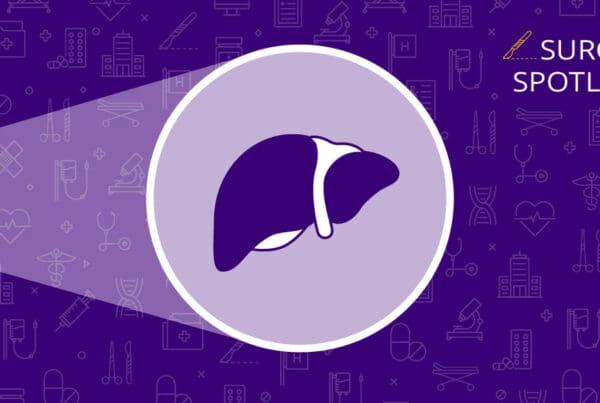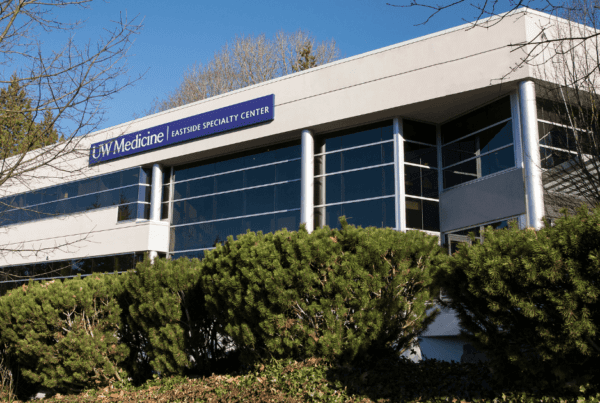Highlights | Helping post-COVID patients
- The Post-COVID Rehabilitation and Recovery Clinic treats patients that have ongoing health issues due to COVID-19.
- Ongoing symptoms can affect physical, functional, cognitive and mental health.
- Although we are still learning about the lasting effects of COVID-19, the clinic is seeing positive outcomes.
In May 2020, just two months after COVID-19 was declared a pandemic, Aaron Bunnell, MD, director of rehabilitation consults at Harborview, opened the Post-COVID Rehabilitation and Recovery Clinic after seeing an influx of patients who had been in the ICU with COVID-19 that needed rehabilitation support.
Long stays in the ICU, for any reason, put patients at risk for post-intensive care syndrome (PICS). PICS can show up as muscle weakness, cognitive dysfunction or mental health problems. Patients often need to work with a rehabilitation specialist.
Although PICS is common and expected for COVID-19 patients with long ICU stays, it was surprising when patients with COVID-19 who hadn’t been hospitalized started showing up with similar side effects. In September 2020, the clinic expanded to include anyone having a long recovery from COVID-19, not just those who had been hospitalized.
Who gets referred?
Roughly 40% of the patients the clinic now treats were hospitalized for COVID-19 and 60% were never hospitalized for COVID-19. This ratio follows the current trend of hospitalizations for COVID-19 in King County.
Patients who are having post-COVID-19 symptoms are often called “long-haulers” who have “long COVID” or “long COVID syndrome.” The terms are informal and haven’t been defined yet; although, the National Institutes of Health is working on a definition.
Bunnell also isn’t a fan of using the term “long-hauler;” he prefers “late effects of COVID” instead.
“I’m worried the term ‘long-haulers’ isn’t a clear medical definition and implies more about the expected long-term outcomes than we actually know and may become a medicalized identity for some,” says Bunnell. “That’s harmful because it can shape provider and patient perspectives on disease and even influence personal and medical decision-making and public policy.”
What are the most common symptoms?
The continuing symptoms that patients experience range from physical to cognitive and can even affect mental health. While there is still much to be learned, the most common symptoms the clinic treats depend on if the patient was hospitalized or not.
Hospitalized for COVID-19:
Bunnell says that inpatients who were hospitalized often experience acute respiratory distress syndrome, which occurs when fluid leaks into the lungs. These patients frequently have deficits in strength and muscle function, endurance, damage to the peripheral nervous system, impaired thinking and impacts on their mental health — or all of these issues.
Non-hospitalization for COVID-19:
These patients often come to the clinic because they have noticed decreased endurance or shortness of breath with exertion. They may be experiencing autonomic nervous system changes, such as a high heart rate with minimal exertion or when standing. Many patients experience fatigue or changes in sensation or pain. They may have brain fog, trouble remembering or focusing. Some may even experience changes in sleep and increased anxiety and depression.
“We are hoping to start conducting more research to more clearly define the populations and understand the impact,” says Bunnell.
Video Credit: UW Medicine Newsroom
What is the approach to care?
The clinic takes an interdisciplinary and multimodal approach to patient care and coordinates with primary care providers and specialists based on the individual patient’s needs.
“A primary care provider might only have 15 minutes for a patient who needs multiple different areas addressed,” says Bunnell. “This clinic is a natural home for them; it’s a place where they can have all of their needs met either in clinic or with the assistance of core consultants.”
The clinic starts patients with an initial telemedicine appointment and then in-person follow-up visits or consultation visits are scheduled as needed.
Although the clinic is able to treat many of the issues patients are experiencing, Bunnell does note that with this disease, there is not a miracle cure and patients typically recover more gradually. It’s also helpful for patients to feel acknowledged by the medical system and to have a better understanding of what’s going on with their lingering symptoms.
“We are learning how to treat these COVID-19 symptoms as time goes on,” says Bunnell. “There are differences in the post-COVID population and effects that are more widespread than with other diseases — we are figuring out how to best approach treatment.”
Many patients are making improvements in rebuilding their strength and endurance, and the clinic is expanding its capacity to incorporate the growing number of people experiencing symptoms post-COVID-19.
“The majority of patients are improving and making gains,” says Bunnell. “And there’s hope in that.”
How to refer to the clinic
- Providers can refer patients to the “Post-COVID Rehabilitation and Recovery Clinic” and provide details of patient symptoms and deficits.
- Patients can also self-refer by calling 206.520.5000; or, if you are an employee, use the Call Center priority access line: 206.520.5050.
- Learn more from the Post-COVID Clinic referral guide.


